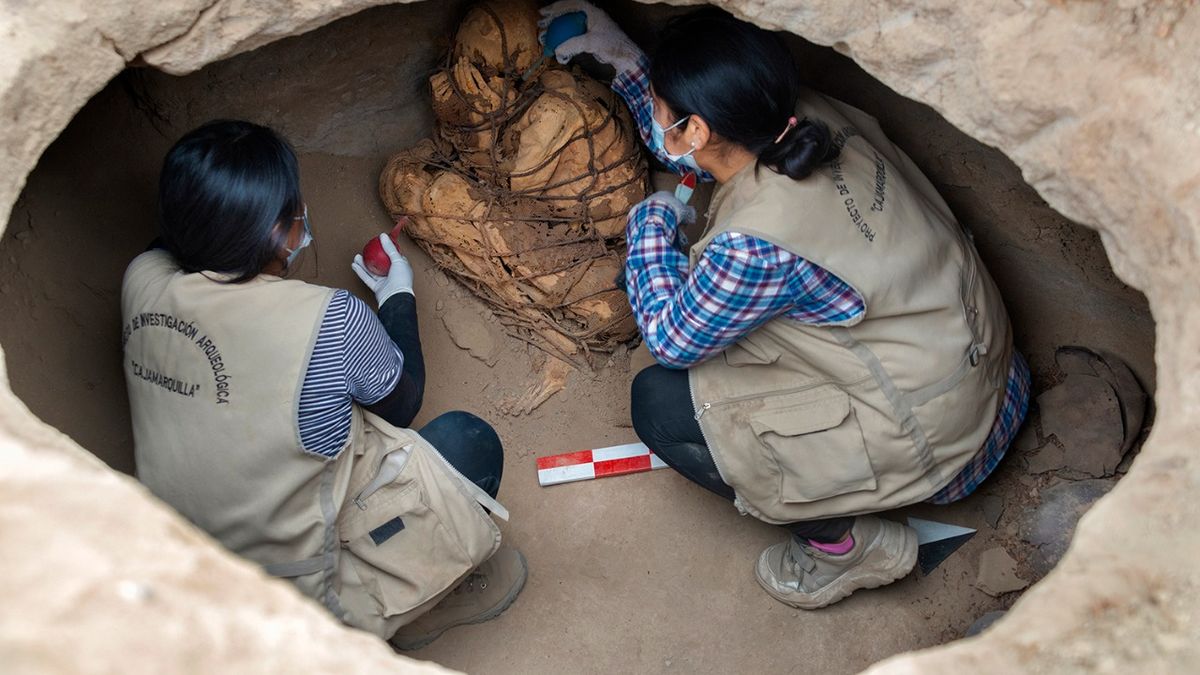For a long time, a handful of handbooks along with chemical studies of selected mummies were the main windows into the mysterious 70-day process that was intended to dry and preserve the bodies of a select few deceased.
According to published research, German and Egyptian experts came up with a total of 121 vessels with remains of unpublished ointments that were used to mummify. They also detailed that each of the containers contained a label specifying the substance and how it should be applied.
Among the inscriptions found, some had phrases such as “to put it on the head”, “so that its smell is pleasant” or “to protect the liver”.
The discovery of the ingredients of the recipe that the Egyptians used for mummification took place in saqqara.
After having transported the containers to a laboratory – they were mostly clay glasses and red bowls – scientists from the German universities of Tübingen and Munich, together with the National Research Center in Cairo, analyzed the samples obtained and found the exact Egyptian formula for embalming.
“The vessels were so well preserved that we were able to find out what substances they used, how they mixed and cooked them to obtain the final product that they later applied,” he celebrated. Maxime Rageotan expert in biomolecular archeology at the University of Munich and co-author of the paper.
Substances applied in mummification
As revealed by the group of scientists, different combinations of substances were applied that included resins, vegetable oils, animal fats and fragrances. Each of these elements were used according to each part of the body and most of them came from remote regions, such as Southeast Asia.
That is why it is believed that the Egyptians had already established trade routes to supply themselves with this type of product at that time.
According to the researchers, different combinations of substances that included resins, vegetable oils, animal fats, and fragrances were applied when proceeding with the mummifications.
Thanks to the labels, it was possible to decipher the use of some everyday ingredients and the role they played in the extensive process. For example, the use of pistachio and juniper or cypress resin was identified, as well as beeswax, all applied to embalm the head, wash the body, and soften the skin.
“The skin is one of the tissues that is corrupted before and they knew exactly what they had to use and they used antifungal, antibacterial and antiseptic substances to preserve it as much as possible”, he specified. Philip Stockhammerwho co-authored the study with Rageot.
Along with this, they also found remains of damar and elemi -plant species that only grow in tropical environments- and of bitumen, probably from the Dead Sea. Regarding the latter, there were only samples in parts of the burial chamber, so it is believed that it did not play an important role in the mummification.
Thanks to the labels on some of the 121 vessels, it was possible to decipher the use of some everyday ingredients and the role they played in the extensive process.
The rest of the ingredients found became old and degraded waste, so the chemical analysis could only give a clue as to what used to be inside the vessels. They were mostly plants. Some of them, the research paper points out, only grew at that time in America.
The new study made it possible to challenge certain long-held assumptions about Ancient Egypt. For a long time it was thought that “antiu” was a word that meant myrrh. But at least five vessels labeled with this term contained a mixture of animal fat and oil or tar from cedar, juniper, and cypress.
In the same way it happened with the word “sefet”, a word that had been translated years ago as sacred oil. However, three labels on containers that contained that legend contained animal fats combined with vegetables, which suggests that it was a perfumed ointment.
Mummifications were reserved for the great Egyptian aristocracy, probably pharaohs and the most important people in the court. The vast majority of individuals did not undergo these long and expensive processes, but were buried in the desert and went through a process of natural mummification.
The deceased who was going to be mummified first had the viscera and organs removed to finally extract the brain. Accompanied by specialized priests, the embalmers proceeded to wash the body and prepare it to prevent its decomposition, which prevented a “later life”.
What the Egyptians were after with this process, as detailed The vanguard, was to preserve the body. They believed that upon death, the person lost the life force or Ka and could only be reborn if that life force rejoined the body. And for that to happen, the “mummy” had to be equal to the living person.
Source: Ambito




